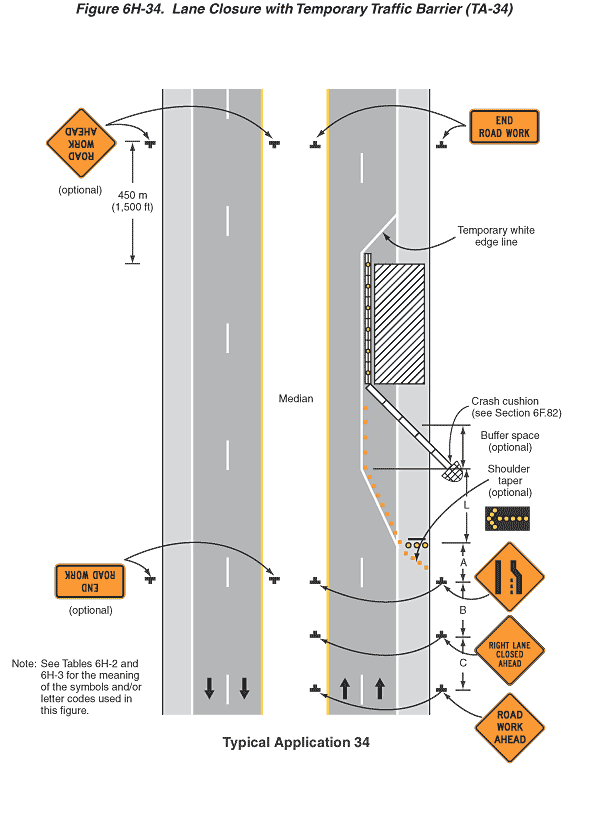
Figure 6H-34. Lane Closure with Temporary Traffic Barrier (TA-34)
This figure illustrates an example of lane closure with a temporary traffic barrier. A legend under the figure states that this is Typical Application 34. A note states "Note: See Tables 6H-2 and 6H-3 for the meaning of the symbols and/or letter codes used in this figure."
This figure shows a vertical divided roadway with two lanes of traffic in each direction. Downward-pointing black arrows in the two left lanes and upward-pointing arrows in the two right lanes denote the direction of traffic. The opposing lanes are separated by a median. A shoulder is shown to the right of each right-hand lane. The shoulders are shown separated from the right lanes by a solid white line. The two lanes in each direction are shown separated from each other by a broken white line. The two left-hand lanes are shown separated from the median by a solid yellow line.
At the bottom of the figure to the right of the shoulder and to the left of the solid yellow line on the median, two black inverted "Ts" are shown denoting signs. The signs are shown as diamond-shaped orange signs with black borders and the words "ROAD WORK AHEAD" in black. These signs are shown at a dimensioned distance C in advance of two more diamond-shaped orange signs with black borders and the words "RIGHT LANE CLOSED AHEAD" in black. These signs are shown at a dimensioned distance B in advance of two more diamond-shaped orange signs with black borders. They show a thick, vertical straight line on the left; a thick, vertical line on the right that angles toward the left half way up; and a thin, short vertical dotted line between them that is the length of the vertical section of the line on the right, denoting a lane ends. At this point, a series of orange squares denoting channelizing devices are shown beginning at the right edge of the right shoulder and tapering to the left for a dimensioned distance A to the solid white line separating the shoulder from the right lane. This shoulder taper is labeled optional. Where the channelizing devices cross the solid white line between the shoulder and the right lane, a horizontal rectangular black arrow panel with a yellow directional arrow pointing to the left is shown across the shoulder. At this same point, the channelizing devices are shown tapering to the left for a dimensioned distance L to the broken white line between the northbound lanes. They then are shown continuing through a buffer space labeled optional until they come to a series of closely spaced white rectangles with small yellow circles representing temporary barriers with warning lights.
At the point where the channelizing devices are shown joining the broken white line between the northbound lanes, a white half oval with a black border and black crosshatch pattern pointing down and to the right is shown, denoting a crash cushion. This is shown just outside the right shoulder and directly in front of a series of connected white bars denoting temporary barriers. A note with a leader arrow to the crash cushion symbol states "see Section 6F.82." The temporary barrier is shown tapering from the crash cushion across the shoulder and the right-hand lane, where it is shown joining the temporary barrier with warning lights. These barriers are shown continuing beyond the work space, denoted by a vertical rectangle with diagonal black lines, which is shown spanning the right shoulder and most of the right lane.
Where the channelizing devices are shown tapering from the solid white line separating the shoulder and right lane, a solid temporary white edge line is shown paralleling the devices to their left and continuing along the broken white line between the lanes past the work space and then tapering to the right to the solid white line between the shoulder and the right lane.
Beyond the work space and to the right of the right shoulder and on the median to the left of the solid yellow line, two horizontal rectangular orange signs with black borders are shown with the words "END ROAD WORK" in black.
At the top of the figure and to the right of the right shoulder and to the left of the solid yellow line on the median, two black inverted "Ts" are shown denoting signs. The signs are shown as Road Work Ahead signs and are labeled optional. These signs are shown opposite the End Road Work signs on the northbound lanes and are shown at a dimensioned distance of 450 m (1,500 ft) in advance of the northern edge of the work space in the northbound lanes. Beyond the work space and crash cushion area, two more signs are shown to the right of the right shoulder and to the left of the solid yellow line on the median. These are shown as End Road Work signs and are labeled optional. They are shown opposite the lane ends symbol sign on the northbound lanes.
